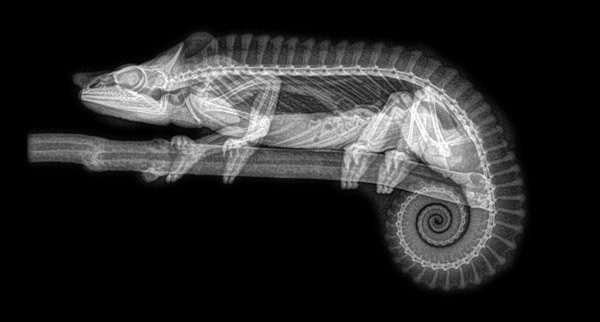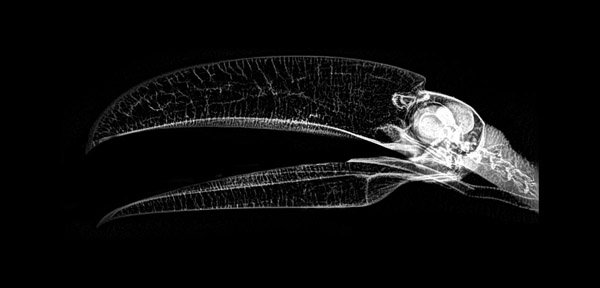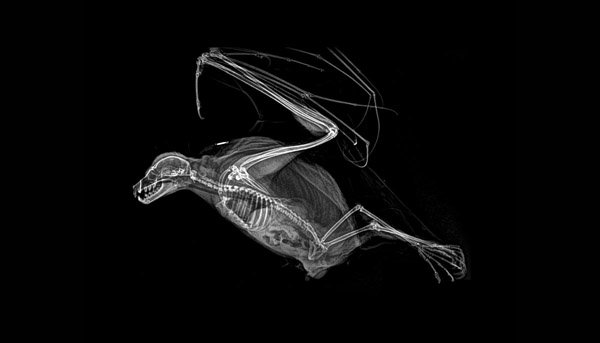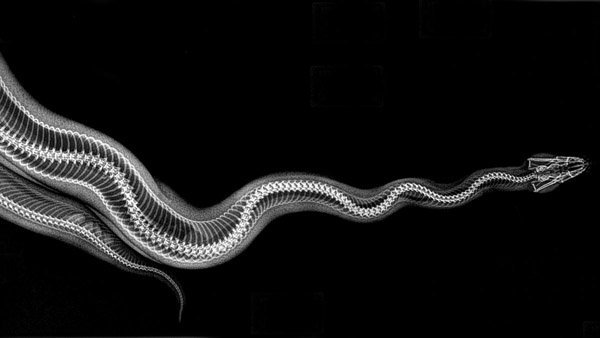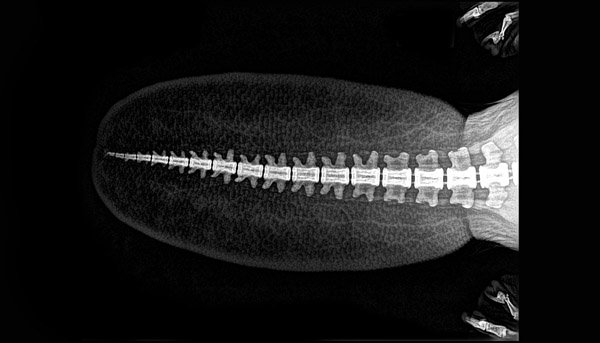We need your help! This hippo is trying to tell us something but we can’t figure it out! Take a look at the picture below and see if you can come up with the best caption!
Post your ideas in the comment section below.

We need your help! This hippo is trying to tell us something but we can’t figure it out! Take a look at the picture below and see if you can come up with the best caption!

The final stop on our energy tour takes us right to the Earth Rangers Headquarters but this time we aren’t just talking about renewable energy. We’re talking about energy-saving too! Let’s meet up with our feathery tour guide and take a look!
 Hi Earth Ranger! I’m Koho and I’m an eagle. I’m an Animal Ambassador, and I live at the Earth Rangers Headquarters, so there’s no one better to show you around. First, let’s head out to the parking lot!
Hi Earth Ranger! I’m Koho and I’m an eagle. I’m an Animal Ambassador, and I live at the Earth Rangers Headquarters, so there’s no one better to show you around. First, let’s head out to the parking lot!
The first thing you see is all our solar panels. There are 324, counted them myself! But these aren’t the only ones we have. There are also another 144 panels on the roof of the outdoor aviary (that’s where all the Animal Ambassador birds like me live). That’s a whole lot of solar panels collecting rays from the sun and turning them into energy. In fact, they give us 35% of the electricity we need for the building!
![]()
Now, if you look down…um… I guess you’d just see pavement. Ok, well, even though you can’t see it, there are small wells of liquid below our feet. In the winter, the liquid in these wells stays warmer than the air above it, because it absorbs heat from the ground. What is energy stored in the ground called again? *cough* geothermal energy *cough*! The heat from this liquid travels through our walls, ceiling, and floors to heat the building. When the building needs to be cooled in the summer, the heat travels back into the wells in the ground. This saves us lots of energy because we don’t need to use as much heating and air conditioning.

These are just two examples of how we reduce the energy we use at the Earth Rangers Headquarters. Check out these other ways:
– There are tons of windows and skylights, which mean we don’t need to use as much electricity to light up the building.
– We collect energy from the sun using our solar thermal panels to heat water in the building.
– In the basement, there are 20m (65ft) long Earth tubes that carry air from the outside, down into the earth and up into the building, which help keep the building cool in the summer. This is another example of geothermal energy at work.
– Our green roof absorbs less heat from the sun during the summer than a roof with shingles, keeping things cool. In the winter, it helps insulate the building and keep it warm (like a blanket).


Climate change is one of the biggest threats facing our planet today, and one of the ways you can help fight against it is by cutting back on the amount of energy you use at home!

Heating our homes is important for surviving Canadian winters, but many of us are keeping it warmer than it needs to be. Over 62% of the energy we use at home goes towards heating, which is more than all the energy we use for appliances and lighting combined!

Most Canadians use natural gas or electricity to heat our homes, both of which release greenhouse gases when they’re burned or generated (depending on the energy source). These greenhouse gases end up in our atmosphere and contribute to climate change. That’s why it’s so important to save energy, and a great way to start is by adjusting your thermostat!
To complete this Mission, you must:
– Turn your thermostat down for at least one week in the winter.
– Put the sticker that came with your Mission Brief beside your thermostat as a reminder to keep the temperature lower in the winter.
– Throw on your wackiest, craziest, fuzziest, or comfiest sweater and use the tips in the Mission Brief to keep warm (don’t forget to take a pic!).
– When you’re done, come back and let us know how your mission went!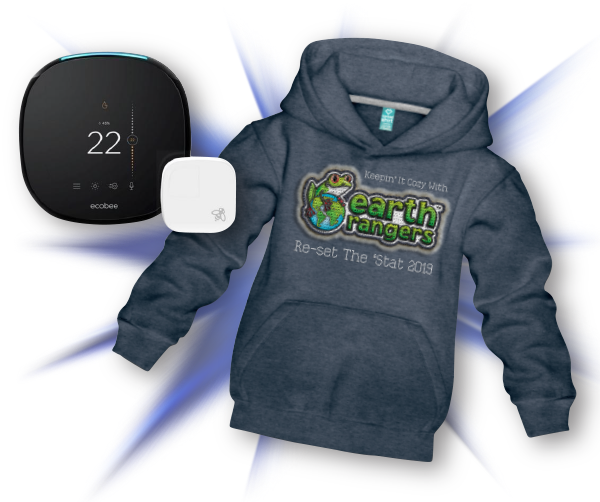
For a limited time, you can enter the Re-set the ‘stat contest! Submit a photo of you in your fun sweater doing something to keep warm along with a short write-up for your chance to win an ecobee4 smart thermostat and a one-of-a-kind Earth Rangers hoodie!
Accept the Re-set the ‘stat Mission to learn more!
 |  |  |  |
Moving water is an important renewable energy source in Canada. We’ve already looked at how oceans can be used to create energy. Now, we’re heading farther inland to look at how our rivers and streams can generate electricity too. It’s hydropower time!
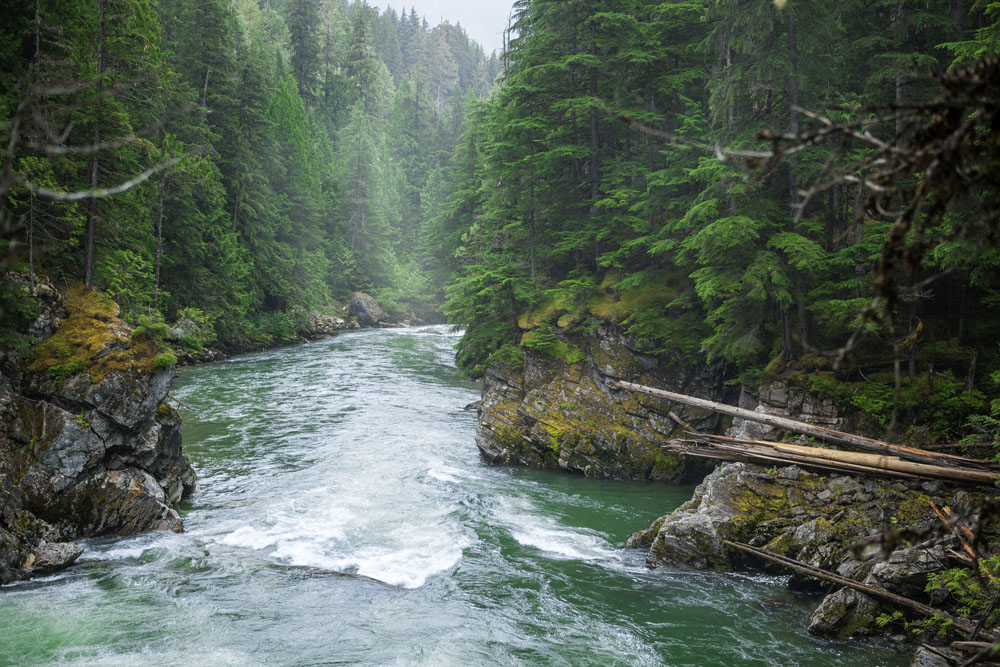
A hydropower station is usually set up along a river or stream. The water flows into a pipe where it meets a turbine. The pressure from the flowing water pushes against the blades of the turbine, causing it to spin, which powers a generator and produces electricity. The water then flows out of the power station and continues on its way.
Hydropower plants often use dams to control when the water flows and how much of it enters into the pipes. This lets us generate electricity during the times of day when we need it most.

Did you know that 60% of the electricity generated in Canada comes from hydropower? While almost every province and territory generates hydropower (except Nunavut and PEI), the big winner is Quebec! 95% of that province’s electricity comes from hydropower.
Our hydropower game isn’t just strong in Canada; it’s strong around the world! We are one of the top generators in the world, and together with China, Brazil and the USA, we generate half of the world’s supply!
The bad news
Hydropower isn’t perfect. It can be damaging to ecosystems if the power stations interrupt the natural flow of the water, cutting off fish migration routes and stopping important sediments from traveling downstream. They can cause water levels to rise and fall with the energy demand, sometimes as much as several hundred feet! This can impact where animals like birds, fish and small mammals grow, nest feed, or spawn. It also prevents plant growth, which can lead to erosion of the land along the bank.

The good news
Hydropower can also help us cut down on our greenhouse gas emissions because it allows us to generate electricity without using fossil fuels. In Canada and the USA, hydropower helps us avoid 350 million tonnes of greenhouse gas emissions a year! That’s like taking 76 million cars off the road!
Scientists and engineers are also working hard to reduce the environmental impact of hydropower plants. Some dams are already using fish-friendly turbines, which let fish to swim through the blades, and other use fish ladder or bypass systems, which allow fish to swim up around the dam. We’ll have to wait and see what they think of next.



Sources:
www.epa.gov/greenvehicles/greenhouse-gas-emissions-typical-passenger-vehicle
www.nrcan.gc.ca/energy/energy-sources-distribution/renewables/small-hydropower/fish-friendly-turbine/7367
fwee.org/environment/how-a-hydroelectric-project-can-affect-a-river/how-a-hydro-project-affects-a-river-print/
www.enbridge.com/energy-matters/energy-school/hydroelectric-power-in-north-america
www.cer-rec.gc.ca/nrg/sttstc/lctrct/rprt/2017cnddptnrnwblpwr/hdr-eng.html
www.nrcan.gc.ca/science-and-data/data-and-analysis/energy-data-and-analysis/energy-facts/renewable-energy-facts/20069#L4
Oceans cover more than 70% of the planet’s surface – that’s a lot of water! Now, you probably already know that the ocean is more than just a home for fish and other sea creatures, but did you know that it can be used to generate electricity?

Where does this power come from? Anywhere the ocean moves! Waves, currents and the tides are all potential sources of energy. Not only is it a renewable resource, it is also mostly pollution-free and doesn’t produce greenhouse gases.
DID YOU KNOW? Waves are most often caused by wind blowing across the water, while tides are caused by the gravitational force of the sun and the moon!

One of the ways to capture energy from tides is to use a Tidal Turbine. It’s just like a wind turbine, but underwater. The current of the tide pushes the blades of the turbine and as it rotates, a generator produces energy.
Since we know the times the tides will rise and fall, it’s easy to predict when most of the energy will be generated.

One of the ways to capture energy from waves is to use a Point Absorber. That’s where a special buoy floats on the surface of the water and is connected to a generator. As the waves pass, the buoy goes up and down, causing the generator to produce energy.
Ocean power generation is definitely making waves, but it’s still just the beginning. Right now, the technology is still being developed and tested. In Canada, we have a tidal power plant in the Bay of Fundy in Nova Scotia, and Canadian inventors and innovators are working hard to bring other generators to our shores.
 |
 |
Even if we master the technology, there are other factors that will still need to be figured out, like cost as well as the impact to the environment and people. But once those are taken into account, we’re shore that the future of ocean power will be bright!

Sources:
https://www.nrcan.gc.ca/energy/energy-sources-distribution/renewables/marine-energy/what-marine-renewable-energy/7371
https://www.nrcan.gc.ca/energy/energy-sources-distribution/renewables/about-renewable-energy/7295#ocean
http://publications.gc.ca/collections/collection_2008/ic/Iu44-55-5-2007E.pdf
Boooooooo! Greetings Earth Rangers! We have a special treat for you! No, this isn’t a trick. It’s Halloween and welcome to the spoooookiest episode of the Earth Rangers Podcast yet!
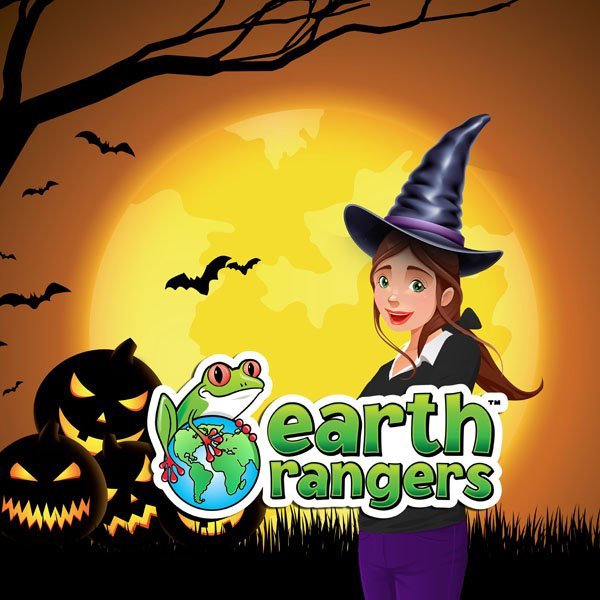
The Earth Rangers Podcast is the BEST animal podcast EVER! You’ll join Emma, our podcast host and Earth Ranger Extraordinaire, as she journeys from ecosystem to ecosystem on a quest to solve some of nature’s greatest mysteries!
Earth Ranger Emma is on a midnight assignment in the deep dark forest, exploring all things Halloween. From bats to cats to “holy cow, what WAS that?!” come along and get ready to have a howlin’ good time!
Just click the play button on the player below and get ready for another adventure!
Dragons, gremlins, Bigfoot, trolls and… Mexican salamanders? These monsters have a lot more in common than you might think! Let’s take a closer look at the axolotl, an underwater salamander found in Mexico who has some wacky supernatural powers!
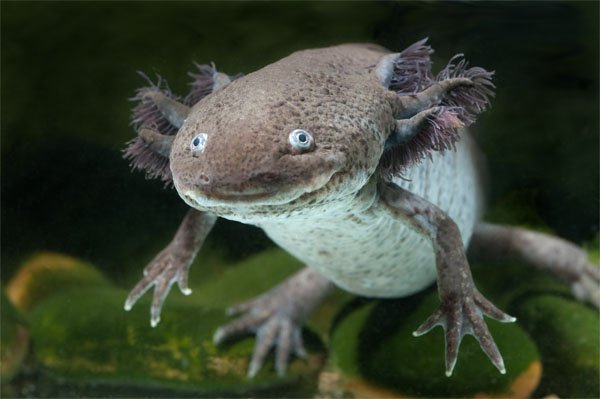
This little guy may have gills and live under the water, but call him a fish and you’ll be in trouble! The axolotl is quite proud to be a cold-blooded amphibian, whose name actually translates to “water monster”.
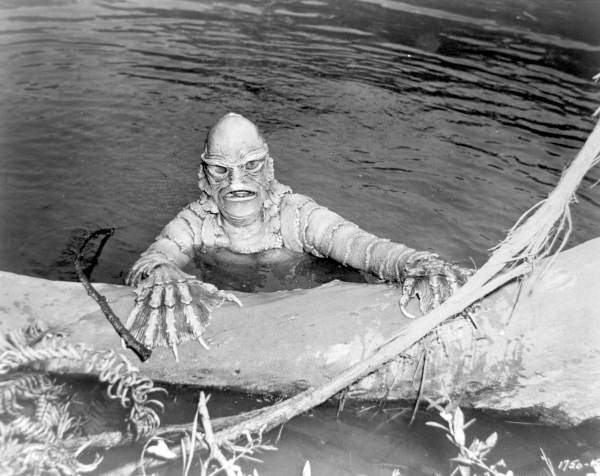
Our first contender comes to us from deep in the Black Lagoon. This man-fish creature first appeared in horror films in the 1950s and he really gives us the creeps! With gills on either side of his head and a pair of lungs to boot, he can breathe on land and in the water. He’s just waiting to chase humans into his swampy lair. Pretty spooky, huh?! Let’s see how axolotls stack up.
You see those fuzzy, branch-like things poking out of the axolotl’s head? Those are gills, and just like Gill-Man, axolotls ALSO have lungs! But wait… there’s more! Axolotls actually have 4 different ways of breathing! They can breathe oxygen from water through their skin and through the back of their throat too.
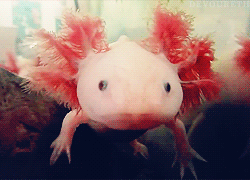
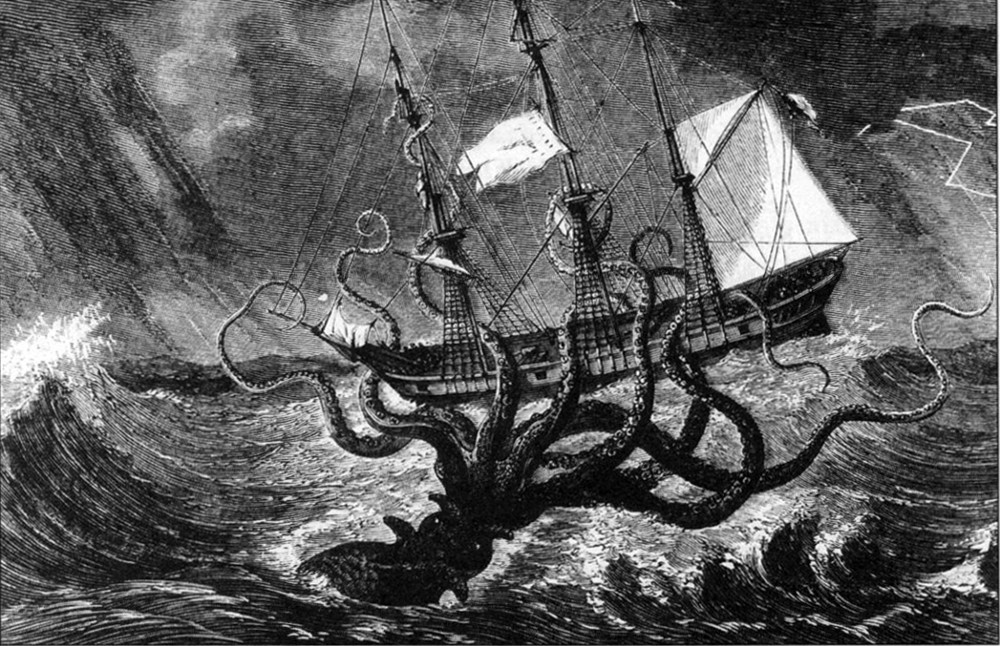
The legendary Kraken is a giant octopus known for its many spikey tentacles and fearsome hunger. This sea monster fought many ships in the Greenland Sea and if wounded, we have no doubt that it would be able to heal and regenerate like other octopi.
Though axolotls don’t have spiky tentacles, they CAN regrow their limbs and even their spines when injured! They also have a hungry carnivorous appetite for small fish, worms, insects, and just about everything else small and meaty. Watch your toes!
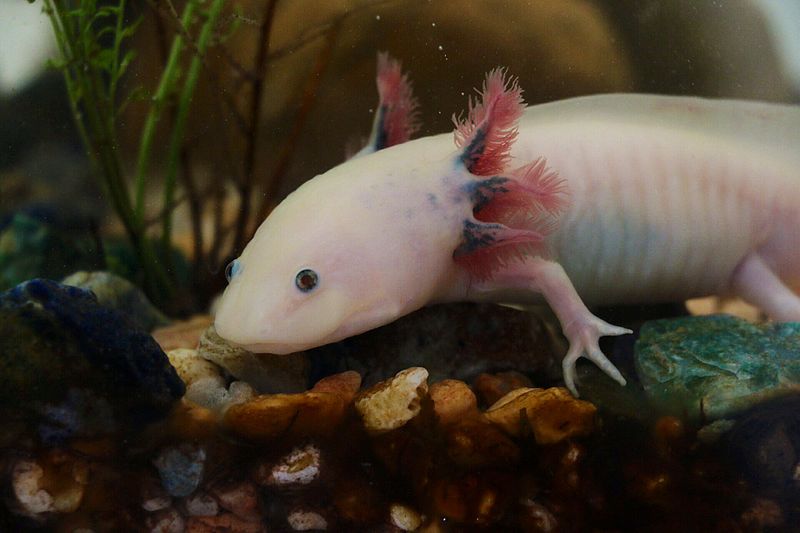

Those of us who have seen the movie Frankenstein know that the monster is a science experiment gone wrong. A scientist tries to bring to life a child-like creature that ends up storming the town like a hangry person having a temper tantrum.
Now, axolotls aren’t known for having a terrible temper, but they are stuck in a child-like state…sort of. While most amphibians are born and develop in water, they eventually go through a metamorphosis that allows them to live on land. Axolotls, on the other hand skip that metamorphosis and they live their entire lives underwater. Just like Frankenstein’s monster, you could say that axolotls are forever frozen in childhood. However, unlike Frankenstein’s monster, they prefer to play under the waves and explore the muddy bottom with their sticky little feet rather than chasing townspeople.
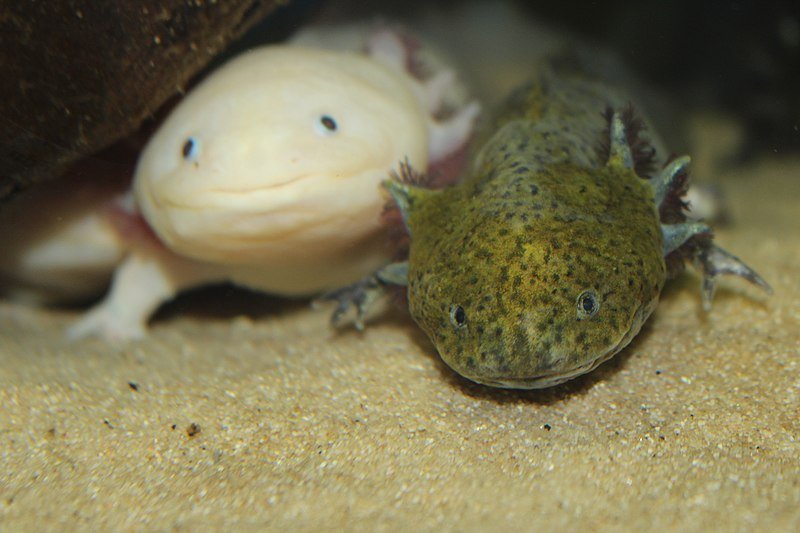
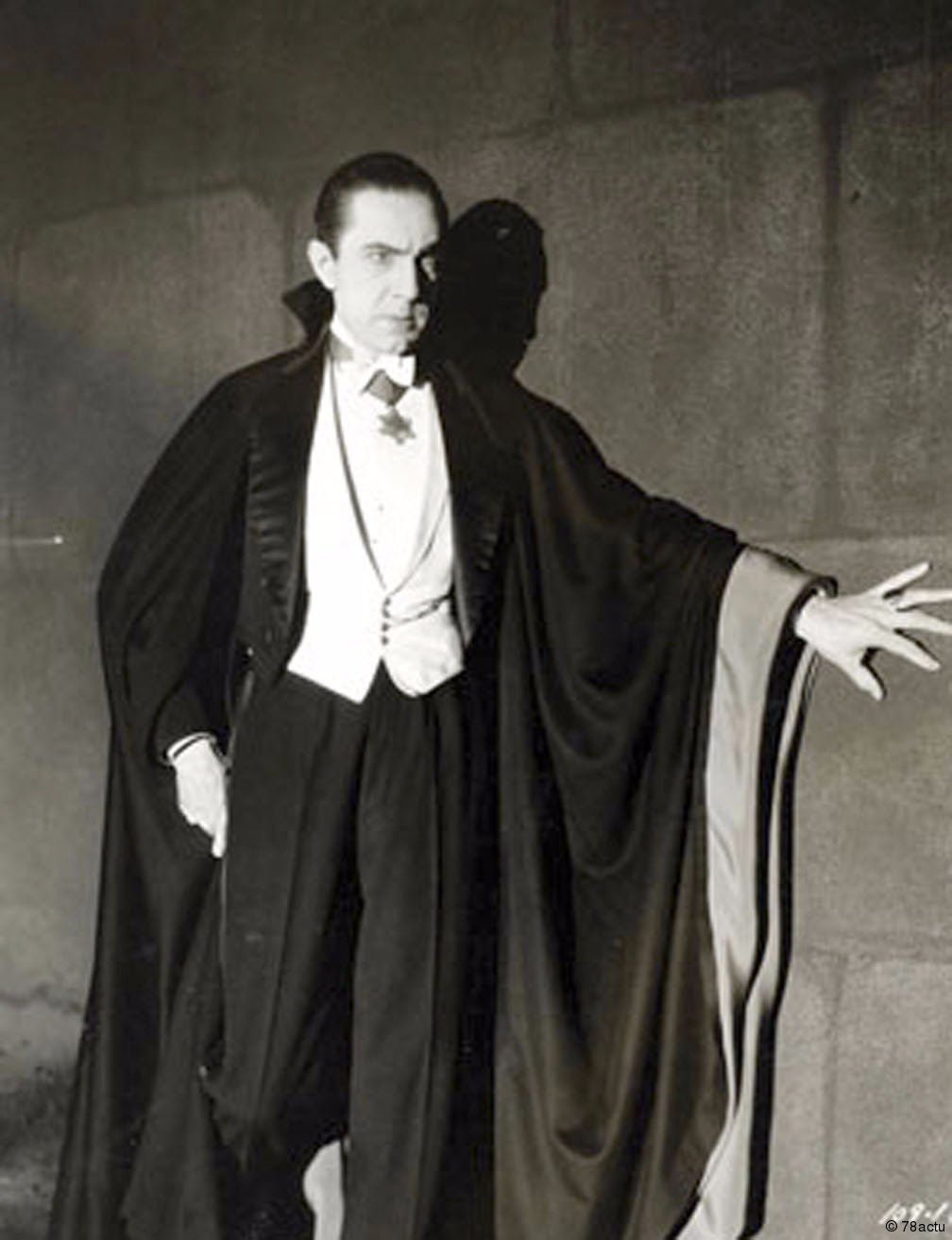
The vampire has GOT to be the monster best known for their perfect, pointy pearly whites. Their smiles are known to lure in unsuspecting victims and their fangs are perfectly designed for sucking blood.
Ignoring the blood-thirsty part, just TRY to tell us that you aren’t blown away by this axolotl’s huge, adorable smile. Just like catching a contagious yawn, we can’t help but smile along with these happy-go-lucky miniature monsters.
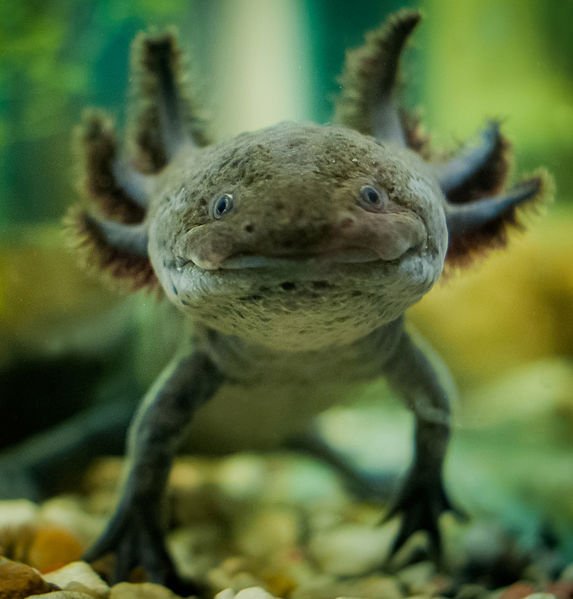
So who’s the winner? Axolotls, duh! Each of these monsters has cool powers but axolotls are the only ones that are real.
Our next stop on the renewable energy tour starts with a quiz: what type of energy can you get from wood, crops and… poop? Got your guess? The answer is biomass!
It might surprise you, but you’ve probably seen biomass energy in action. Ever sat next to the warm glow of a fire? BOOM! You’ve been biomassed (that’s a word, right?)
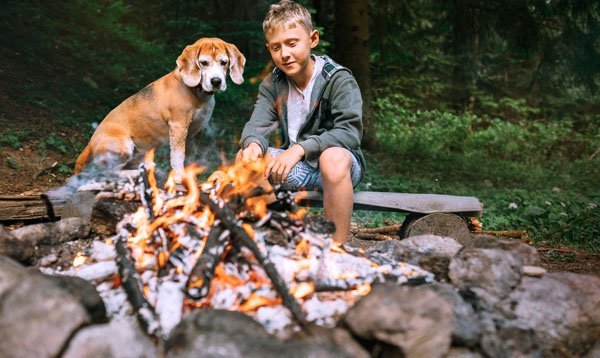
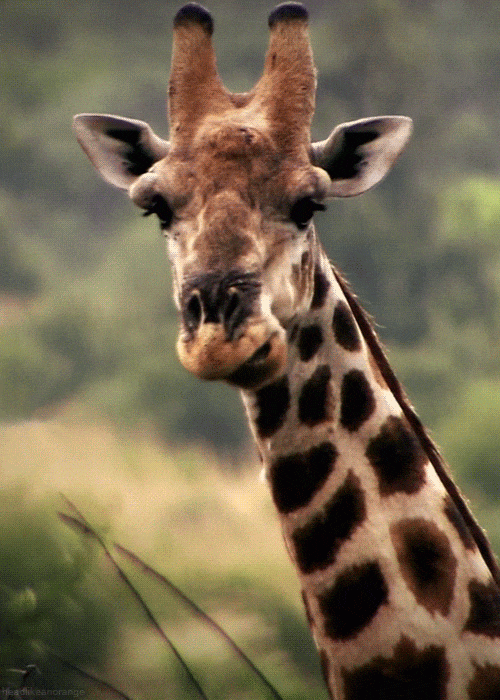 Burn!
Burn!Plants, animals and even our poop have energy stored in them. Plants convert sunlight into energy (you might know this as photosynthesis) and animals get energy when they eat food. Since animals can’t absorb all the energy they take in, some of that energy also ends up in their poop.
When you burn this organic matter, you release the energy that was stored in it. This energy can be used to keep you or your house warm and help you cook your food. If you have the right equipment, you can even use it to create electricity!
Wood is the most popular source of biomass energy but another good source is garbage. Power plants that burn garbage and turn it into energy are called waste-to-energy plants, and in some cases, they can generate as much electricity as coal. Unfortunately, creating electricity this way is pretty expensive, but it does help the planet because using garbage as an energy source means less of it ends up in landfills.
Burning organic matter isn’t the only way to create energy from organic materials. There’s another way, but we have to warn you…it’s stinky!
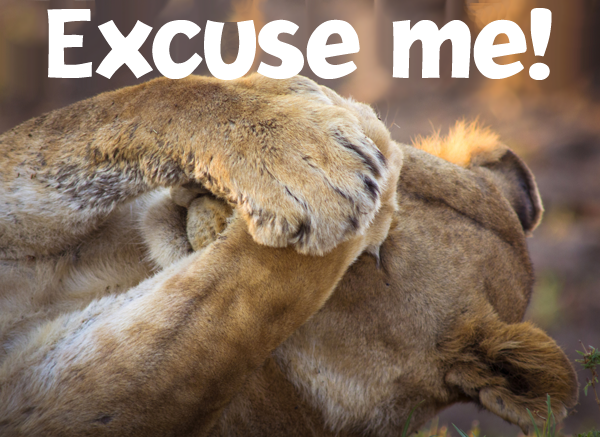
When certain organic matter (like poop, vegetable and fruit peelings, or that dinner you didn’t finish last night) breaks down or rots, it gives off a gas called biogas, which we can capture using HUGE vessels called anaerobic digesters (ADs).
Hey! Want to know something funny? Our bodies are like big AD machines. The food we eat gets broken down in our intestines, which creates a biogas (farts)!
After a little cleaning, the biogas collected in ADs becomes biomethane, which can be injected into the underground pipes of the local gas utility where it is sent to everyone’s home to be used in furnaces and hot water heaters to keep our families warm and cozy. This is what’s known as renewable natural gas (RNGs).
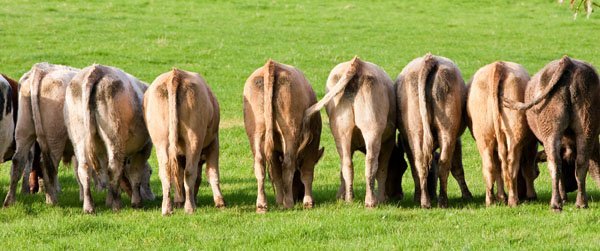

Sources:
http://alliantenergykids.com/EnergyandTheEnvironment/RenewableEnergy/022398
https://www.eia.gov/energyexplained/?page=biomass_waste_to_energy
The Earth Rangers Podcast is back with a special bonus episode and this time, things get wild – Bring Back the Wild, that is! Catch up with Emma and learn about some awesome animals that need your help.
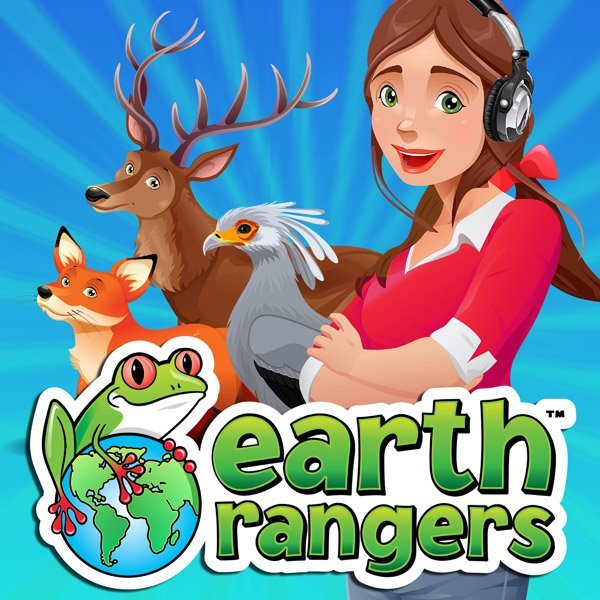
The Earth Rangers Podcast is the BEST animal podcast EVER! You’ll join Emma, our podcast host and Earth Ranger Extraordinaire, as she journeys from ecosystem to ecosystem on a quest to solve some of nature’s greatest mysteries!
We’ve been very busy at Earth Rangers, but boy was it worth it! We have very exciting news for you about our BRAND NEW Bring Back the Wild project animals. Spoiler alert: they are adorable! Plus: Hear from other Earth Rangers.
Just click the play button on the player below and get ready for another adventure!
Halloween is just around the corner and what’s more Halloweenie than skeletons? Check out these animal x-rays courtesy of the Oregon Zoo and let us know which one you think is the coolest. We like the ball python!
